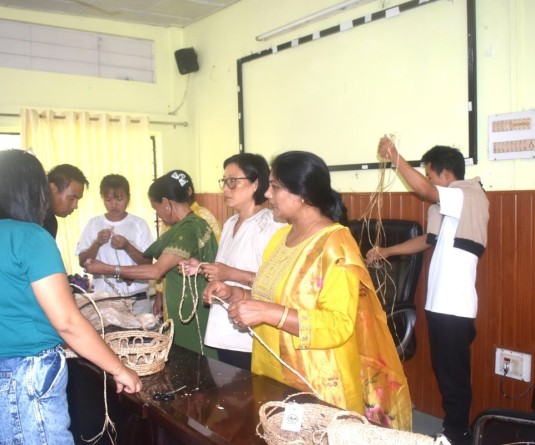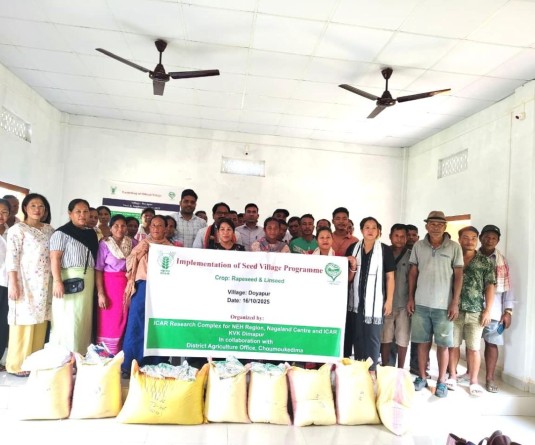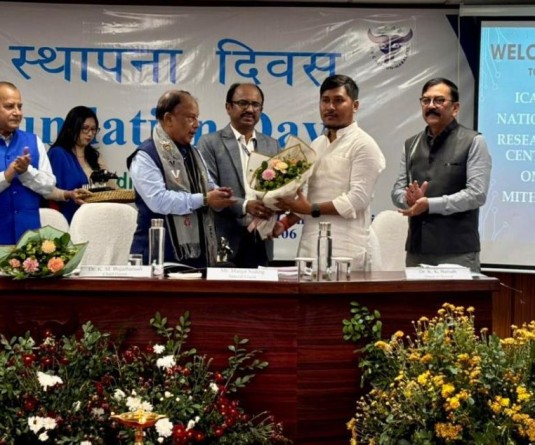
Our Correspondent Kohima | February 4 A two day long training programme on “Value added product preparation from fresh water fish” under the aegis of Central Institute of Fisheries Education (CIFE), ICAR, Mumbai, Ministry of Agriculture in association with state’s Department of Fisheries got underway here today at the Directorate of Fisheries. Gracing the inaugural function, B.P. Chetri, commissioner & secretary fisheries appreciated scientists from CIFE for coming forward to impart training to the entrepreneurs/women folk, which she said, speaks volumes of their concern, sincerity and dedication towards promoting entrepreneurial skills among fisherwomen and Self Help Groups (SHGs) in the state. “Apart from ensuring economic support for women this programme would also ensure nutritional support to our people,” she maintained.
She said value added fish product basically means adding value to the local fishery and aquaculture products which is one of the most important components of post harvest management in the fishery sector. “Post harvest losses in small scale fisheries can be among the highest for all the commodities in the entire food production system. Appropriate preservation methods can significantly reduce this loss,” the commissioner secretary said adding that reducing post harvest losses requires wiser use of resources, reducing spoilage and discards and converting low value resources, which are available on a sustainable basis, into products for direct human consumption. Reducing spoilages requires improved fish handling, processing, preservation and transportation, all of which are particularly deficient in small scale fisheries, she added. She said increasing production and productivity is one thing but to optimize the use of fishery resources for human consumption is another. “Taste and consumer habits change over time as lifestyle evolves and therefore it is necessary to adapt the products to the changing needs and expectation of consumers and hence derive optimum value from their production,” Chetri added. Adapting to market trends does not need enormous effort on the part of the producer but a positive, pro-active attitude is the key to any action to enhance product value, she said. Value added fish products may be minced or minced based products where fish is cleaned, deboned minced and made into fish fingers, cutlets, fish balls etc which are convenience food. She said the fisheries department has been emphasizing in integrating and assisting the grass root women as economic SHGs in fish farming through development process and adoption of value added fish products since 2009. Awareness programmes/ capacity building are being timely organized to directly sustain family livelihoods, economic development and food security for members of the SHGs, she added. Further, Chetri made a fervent appeal to all the trainees to absorb and derive maximum benefits from the ongoing training. Zenohol Angami, director of fisheries said that due to the growing demand for fish, especially from developed countries as a nutritional and functional food, value-added fish products has become an important food component. “Over the years, to achieve the level of self-sustenance in fish production, the department has been focusing on ponds and tanks culture system with special emphasis on human resources development, diversification of fishery activities and use of more technological inputs,” the director said. He also said that the department has been organizing value-addition training to popularize value-added fish products among the Naga women folks. Further, the director urged CIFE to continue to work for upliftment of fisheries in the state. Earlier, keynote address was delivered by Dr. A.K. Balange, senior scientist, CIFE. Welcome address was delivered by deputy director Neitho-o Kuotsu while vote of thanks was proposed by Ketusielie Angami, assistant director. The training will go on till February 5.
Training on ‘Value Added Product Preparation from Fresh Water Fish’
Our Correspondent Kohima | February 4 The Central Institute of Fisheries Education (CIFE), ICAR, Mumbai today encouraged the Naga youth to take up value-added fish products as business venture, adding that it would help earn livelihood to many. Three officials from CIFE- Dr. A.K. Balange, senior scientist, Bhunudas Phande and Avinash Sable, technical assistants are currently in the state capital Kohima in connection with two day long training programme on “Value added product preparation from fresh water fish” here at the Directorate of Fisheries. According to CIFE, fish contributes immensely to the human nutrition. The demand for ready-to-eat food products is increasing day by day. The growing demands also necessitate development of new food products as well popularization of the existing products. In view of this, CIFE has developed a series of value added fish products from fish muscles. In order to popularize the technology, CIFE has recognized a training programme on “Value added products from fresh water fish” in northeastern states i.e Arunachal Pradesh, Assam and Nagaland during January 27 to February 5 this year. Dr. Balange said this training is kind of skill development programme where prospective entrepreneurs can start their own business after gathering practical knowledge and skills. Talking on the topic “New trends in fish product development: An approach to human health and livelihood,” Dr. Balange said that low cost fish like pink perch, croskers, ribbon fish etc can be used by value addition. He said that high valued fish like seer fish, pompret, rawas etc has established market. Touching on seafood export from India, he said that during 2013-14, for the first time in history of Marine product exports, the export earnings have crossed USD 5007.7 million (valued at Rs. 30, 213.26 crores). “Our fish is being exported to more than 100 countries,” he added. Exports of fish and products exceed those of meat, dairy, cereals, sugar, coffee, oil seeds etc. In many developing countries foreign exchange from fish exports finances other food imports. He informed that the total fish production of India in the year 2013-14 stands 9.58 million metric tonnes.






